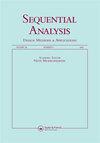Mann随机算法的指数不等式
IF 0.6
4区 数学
Q4 STATISTICS & PROBABILITY
Sequential Analysis-Design Methods and Applications
Pub Date : 2020-01-02
DOI:10.1080/07474946.2020.1726681
引用次数: 0
摘要
摘要在本文中,我们研究了使用具有随机误差的Mann迭代过程来逼近某个函数的不动点的问题。在建立了一些指数不等式后,我们证明了Mann算法向不动点的完全收敛性,并推导出该算法的置信区间。此外,我们还建立了Mann算法的收敛速度。通过几个算例说明了该算法的性能。本文章由计算机程序翻译,如有差异,请以英文原文为准。
Exponential inequalities for Mann’s stochastic algorithm
Abstract In this article, we investigate the problem of approximating the fixed point for some function using a Mann iterative process with random errors. After establishing some exponential inequalities, we prove the complete convergence of Mann’s algorithm toward the fixed point and deduce a confidence interval for this one. In addition, we establish the convergence rate of Mann’s algorithm. Several numerical examples are sketched to illustrate the performance of the proposed algorithm.
求助全文
通过发布文献求助,成功后即可免费获取论文全文。
去求助
来源期刊

Sequential Analysis-Design Methods and Applications
STATISTICS & PROBABILITY-
CiteScore
1.40
自引率
12.50%
发文量
20
期刊介绍:
The purpose of Sequential Analysis is to contribute to theoretical and applied aspects of sequential methodologies in all areas of statistical science. Published papers highlight the development of new and important sequential approaches.
Interdisciplinary articles that emphasize the methodology of practical value to applied researchers and statistical consultants are highly encouraged. Papers that cover contemporary areas of applications including animal abundance, bioequivalence, communication science, computer simulations, data mining, directional data, disease mapping, environmental sampling, genome, imaging, microarrays, networking, parallel processing, pest management, sonar detection, spatial statistics, tracking, and engineering are deemed especially important. Of particular value are expository review articles that critically synthesize broad-based statistical issues. Papers on case-studies are also considered. All papers are refereed.
 求助内容:
求助内容: 应助结果提醒方式:
应助结果提醒方式:


